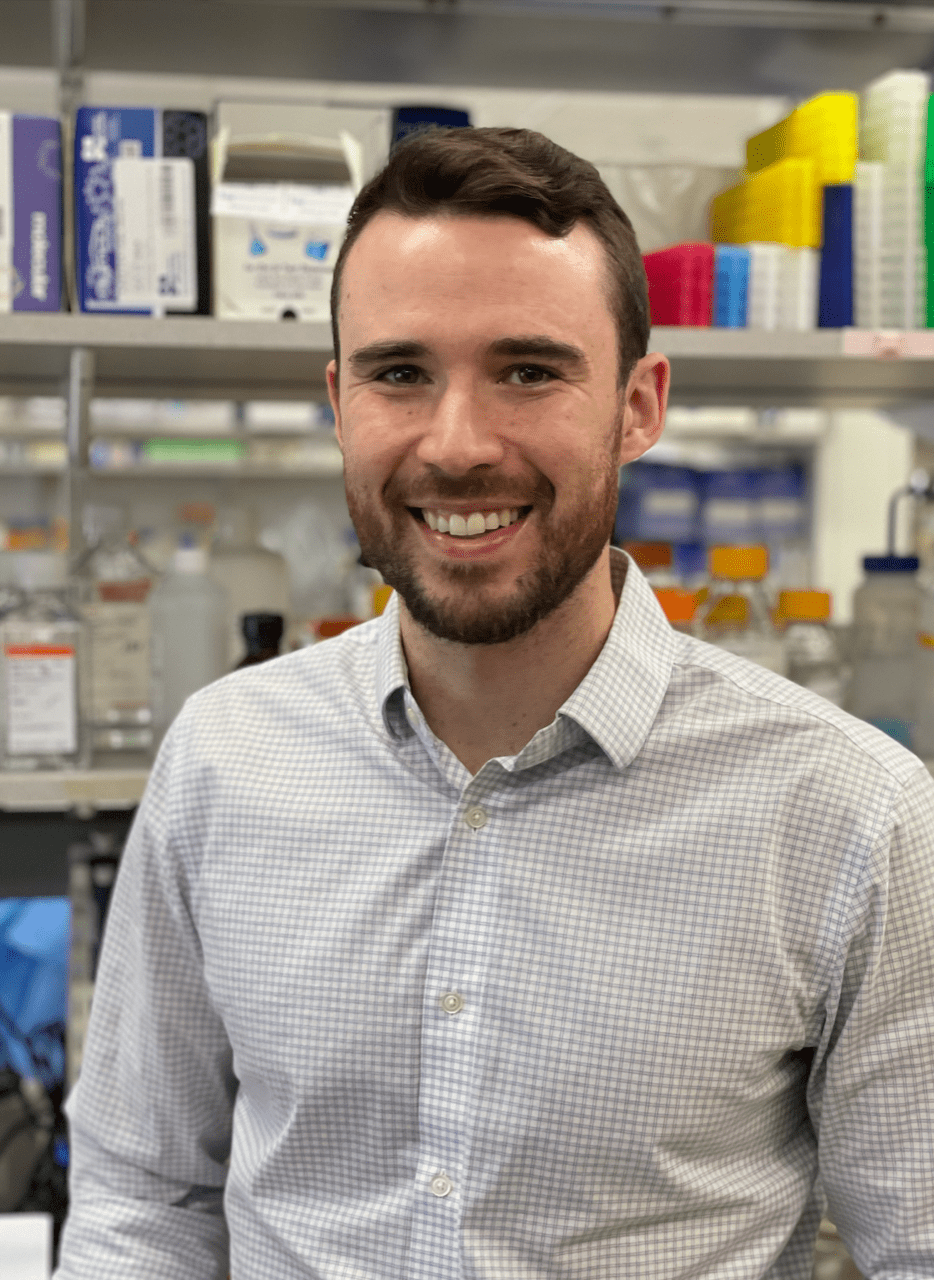
Diptarka Hait
Stanford University
Orbital optimized density functional theory for electronic excitations: Theory and application to time-resolved X-ray absorption spectroscopy of Jahn-Teller distortion
Theoretical modeling of electronic excitations is useful for studying the photophysical/photochemical properties of chemical systems. The popular linear response time-dependent density functional theory (TDDFT) approach is not effective at modeling many types of excitations, including (but not limited to) charge-transfer, double excitations, and core-level excitations. State-specific orbital optimization (OO) for each excited state ameliorates many of these issues. However, OO-DFT has been historically challenging as excited states are generally not minima of energy with respect to orbitals, and therefore standard optimization procedures tend to ‘slip’ down to the electronic ground state instead of remaining on the desired excited state. We report a method for averting this ‘variational collapse’ by recognizing that all stationary points of energy in orbital space are global minima of the square of the gradient of energy vs orbitals. Minimization of this squared gradient can thus reliably converge to the closest state corresponding to a supplied non-aufbau electronic configuration. Our square gradient minimization (SGM) approach preserves the scaling of ground state DFT, and thus can be used to model excited states of large systems with OO-DFT. In particular, this permits nearly quantitative modeling of experimental X-ray absorption spectra, without any recourse to empirical shifts. We have applied OO-DFT to model the time-resolved X-ray absorption spectrum (TR-XAS) arising from Jahn-Teller distortion of the methane cation, obtaining excellent agreement with experiment and revealing a timescale of ~10 fs for the distortion. The TR-XAS signal further reveals coherent activation of scissoring motion about the smallest bond angle in the symmetry broken cation, which is damped out through vibrational energy redistribution in ~60 fs.

Sergio Kogikoski Junior
University of Potsdam
Plasmonically-induced Reactions and Charge Transfer Processes in Self-Assembled DNA Metal-Nanoparticles Interfaces
Nature can perfectly organize different molecular components to achieve very functional nanomachines. Over the last century, scientists have been taking inspiration from nature to obtain very complex and functional assemblies mimicking the natural complexity. Here I plan to explore a similar idea, harvest and convert light energy captured by the plasmonic nanoparticles into electronic energy to perform chemical reactions selectively enabled by DNA charge transfer. One of the most exciting and promising uses of plasmonic nanoparticles is the possibility of inducing chemical reactions at their interface, giving rise to the emerging field of plasmon chemistry. The reactions are driven by different processes occurring at the interface between the plasmonic nanoparticle and the molecules, such as the generation of hot carriers and the thermalization of these carriers into heat. Even though it is challenging to distinguish the contribution of the two mechanisms, both are suggested to affect the reaction pathways. Here, I will show the reaction of a brominated nucleobase incorporated in double-stranded DNA by plasmonically generated hot carriers via a dissociative electron attachment (DEA) mechanism. The nanoparticle ensemble provides electromagnetic enhancement enough to track the reduction of the brominated nucleotide by SERS in a single-point modification scale. Also, due to the addressability offered by DNA, it was possible to insert the modified base at precise positions, allowing the possibility of studying the transfer of hot electrons through DNA. The reaction was observed using SERS, where both the starting bromoadenosine and the adenosine peaks can be observed while carrying the reaction. Further understanding of the DNA-nanoparticle interaction at the interface and charge injection into DNA needs to be gained in future experiments. The study presented here serves to understand plasmon-induced reactions that do not require direct contact with the nanoparticle surface.

Yi Liu
Cornell University
Visible Light Driven Approach to Palladium Catalyzed Carbonylations
Transition metal catalysis has played a vital role in the development of new synthetic methods.The ability of transition metals to mediate covalent bond cleavage and formation via oxidative addition/reductive elimination chemistry is at the core of the use of catalysis in synthesis. An important example is in palladium catalyzed carbonylations, which offer efficient approaches to constructvaluable carbonyl-containingproductsdirectly fromorganic halides, carbon monoxide,and nucleophiles. Unfortunately, an intrinsic limitation to nearly all metal catalyzed coupling reactions is that factors that favor one direction in catalysis(e.g. oxidative addition) have the opposite inhibitory influence on the reverse (e.g. reductive elimination). As a result, it remains difficult or not viable to perform reactions that involve challenging steps in both directions, loweringoverall catalyst activity or limitingefficient accessto many important products.To address this, wedeveloped an alternativemethod, where oxidative addition/reductive elimination chemistry can be decoupled from their classical electronic or steric influences and both driven instead byvisible light through a combination of two different photoreactions.Fundamentally, this breaksan inherent limitation in transition-metal catalysis, that istheneed to balance operations. Usinglight to promotebothsteps in catalysis, this eliminatesthe need to compromiseand thus createsoverall more active catalysts. Synthetically, this opens a general approach for carbonyl-containing productsynthesis. Moreover, this concept has been extendedto the more compatible acyl fluoride electrophile synthesis and to builda general platform foraccessinghighlyfunctionalized carbonyl-containing products

Melissa Ramirez
California Institute of Technology
Enantioselective Ni-Catalyzed α-Spirocyclization of γ-Lactones
Spirocyclic lactones are valuable structural motifs present in various bioactive natural products. Lactones can be readily converted to other useful functionality, adding to the attractive nature of this structural motif in the discovery of new pharmaceuticals. The establishment of new synthetic methods for the asymmetric construction of spirocyclic quaternary centers, which are limited, is further motivated by the correlation between the increased three-dimensionality of drug candidates and their clinical success. We report the development of an asymmetric Ni-catalyzed intramolecular cyclization of lactones and aryl nitriles followed by acid hydrolysis to generate spirocyclic lactones. Density functional theory calculations provide insight on reaction mechanism, which involves formation of a Ni-bound lactone enolate that couples with a pendant aryl nitrile to generate a new spirocyclic quaternary center and β-imino lactone. This serves as the first computational study of the origins of enantioselectivity in Ni-catalyzed nitrile insertion. Our experimental and computational studies are anticipated to expand the synthetic application of Ni-catalyzed nitrile insertion to quaternary center formation and ultimately to enable the exploration of new chemical space in drug discovery efforts.

Steven Shuken
Harvard Medical School
Mass Spectrometry-Based Proteomics with an Enzymatic Probe Reveals Aging-Associated Changes in Protein Abundances and Structures in Cerebrospinal Fluid
Brain aging is a major contributing factor to Alzheimer’s disease (AD). Multiple prominent biomarkers and therapeutic targets for AD are specific structural forms of proteins known to accumulate during aging, but many relevant protein forms are likely undiscovered. To address the long-standing lack of untargeted screens for proteins that change in structure during aging, I used limited proteolysis-mass spectrometry, in which the proteome is probed with a non-selective protease such as proteinase K, inducing cleavages that serve as reporters of protein structure. I performed limited proteolysis-mass spectrometry on cerebrospinal fluid, which is known to contain protein-based biomarkers for brain age and AD, collected from young and aged mice. The subsequent analysis revealed 38 proteins that change in abundance and 6 that change in structure during aging, including proteins known to be involved in harmful autoimmune processes that were previously unknown to be relevant to brain aging. In human cerebrospinal fluid from patients with and without AD, levels of all 6 structurally altered proteins were found to be correlated with cognition or AD disease state. These results reveal several potential new biomarkers of brain age and/or AD therapeutic targets.

Eugenia Vasileiadou
California Institute of Technology
Advancing Hybrid Metal Halide Perovskites and Perovskite-Related Frameworks: Structure-Property Relationships for Next-Generation Energy Conversion
The development of efficient, low-cost energy conversion devices has a central role in our urgent transition to renewable energy sources. Hybrid organic-inorganic halide perovskites are light-harvesting semiconductors for a broad range of energy-conversion applications including photovoltaic and light emission. This is a result of their attractive optoelectronic properties, efficient defect tolerance and convenient solution synthesis-processability, which have led to the design of photovoltaic devices with record high power conversion efficiency (PCE). While an initial perception has been gained on metal halide perovskite’s structure and devices, there is still a lack of systematic design principles for rationally tuning the perovskite structure’s organic and inorganic components for application and commercial perspectives. I will discuss our work on rationally tuning the organic layers of hybrid metal halide perovskites by adding functional groups, expanding beyond the reported aliphatic and aromatic amines. We present three new homologous series of (100) lead iodide perovskites with the organic cations allylammonium (AA) containing an unsaturated C=C group and iodopropylammonium (IdPA) containing iodine on the organic chain: (AA)2MAn-1PbnI3n+1 (n=3-4), [(AA)x(IdPA)1-x]2MAn-1PbnI3n+1 (n=1-4) and (IdPA)2MAn-1PbnI3n+1 (n=1-4), as well as their perovskite-related substructures. The in-situ transformation of the AA organic layers into IdPA and the incorporation of these cations simultaneously into the 2D perovskite structure provides a reaction vessel for pre-exploiting chemical transformations in the solid-state. Single crystal X-ray diffraction shows that (AA)2MA2Pb3I10 consists of a unique inorganic layer offset (0, < ½), yielding a structure type that deviates from the classic Ruddlesden-Popper halide structure. The excited-state dynamics investigated by transient absorption spectroscopy reveal a long-lived (~100 ps) trap state ensemble with broadband emission in the visible region, which can be directly related to the nature of the organic cation with different functional groups. Our evidence suggests that these states appear due to lattice distortions induced by the incorporation of the IdPA cations. We demonstrate that the inclusion of (non-optically active) functional groups onto the organic cation chain governs the synthetic preparation, crystal chemistry and recombination dynamics of the resultant thick-layer lead iodide perovskite. Altogether, we have elevated the current synthetic output and further advanced the rational design of hybrid semiconductors for next-generation, optoelectronic devices.

Mikey Wojnar
Massachusetts Institute of Technology
Molecular color centers for the second quantum revolution
We are currently in the second quantum revolution, where we are harnessing the knowledge of quantum physics for applications covering an extensive range of fields, such as computation, sensing, networking, and metrology. The fundamental unit of information that underpins all of these technologies is the quantum bit, or qubit. One promising class of qubits are electronic spins in wide-band gap semiconductors, such as the anionic nitrogen-vacancy pair defect in diamond. Using a bottom-up molecular chemical approach, we can create designer molecular qubits with atomistic control that emulate the electronic structure of these defect spins, with the added benefit of tunability, scalability, and portability. In this talk, I will discuss imbuing biocompatible molecules with a spin-optical interface for initialization and readout, as well as integrating these molecules into bioinspired self-organizational architectures.
